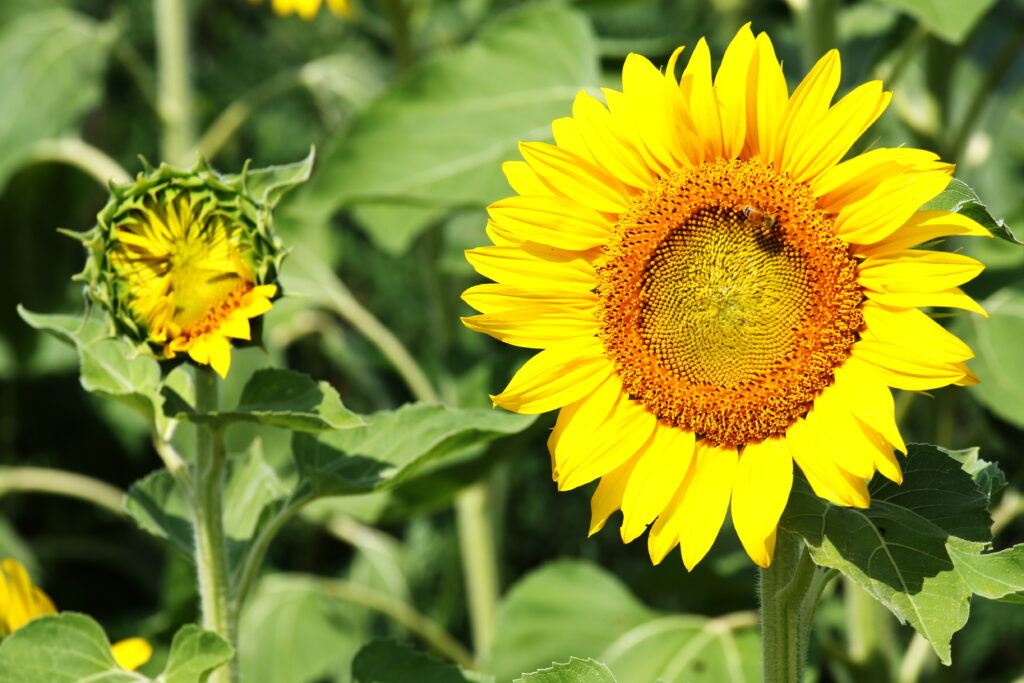Sunflowers in August: A Quick Guide to Growing and Caring

Welcome to August, a vibrant chapter in the gardening year where the fruits of your labour are sweetly realized! As summer reaches its peak, your garden bursts with life, offering a cornucopia of colours, textures, and flavours. This month presents a unique blend of opportunities and challenges, from harvesting lush vegetables to planting for the crisp days ahead. Let’s dive into how you can make the most of this lush time in your outdoor oasis! Sunflowers in August Sunflowers are a summer garden favourite, known for their vibrant blooms and ecological benefits. They attract pollinators like bees and butterflies, improve soil health with their deep roots, and provide nutritious seeds for snacking or bird feeding. Plus, their bright, towering presence adds a cheerful touch to any garden. It is important to remember choosing the Right Variety We have the option of the Mammoth Sunflowers, Tall giants, up to 12 feet, great for harvesting seeds. The Autumn Beauty is A mix of red, orange, and yellow blooms, ideal for ornamental use and last but not least The Teddy Bear , Dwarf variety, grows 2-3 feet, perfect for small spaces or containers. Planting and Care Tips For best care choose a spot with 6-8 hours of direct sunlight daily. Plant in well-draining soil, about 1-2 inches deep, spacing seeds 6-12 inches apart. Remember Water deeply and regularly, especially in early growth stages. Keep soil moist but not waterlogged. Taller varieties may need staking to prevent toppling. Don’t forget to watch for aphids or mildew; use natural remedies like neem oil if needed. For harvesting seeds wait until the flower heads turn brown, then cut and dry them upside down. Once dry, remove the seeds for a tasty snack or bird feed. Enjoy fresh sunflower bouquets indoors or leave some flowers on the plant to attract birds, alternatively use sunflowers in DIY crafts like wreaths or dried arrangements. Regardless of use they are a must-have in August gardens. Vegetable right at your disposal – spinach Spinach is a cool-season leafy green that’s perfect for planting in August. It grows quickly, maturing in just 4-6 weeks, and is packed with nutrients like vitamins A, C, K, and iron. Spinach is versatile in the kitchen, great for salads, soups, and more. Plus, it’s cold hardy, tolerating light frosts, making it ideal for fall gardening. Tips and guide to getting started When planting spinach consider varieties like *Bloomsdale Long Standing* (resistant to bolting), *Tyee* (slow to bolt), and *Space* (smooth-leafed). Prepare well-draining, fertile soil with compost. Plant seeds ½ inch deep, spaced 2-4 inches apart, and keep the soil moist. Sow every two weeks for continuous harvests. Thin seedlings to 4-6 inches apart, mulch to retain moisture, and use organic pest control if needed.Harvesting and StorageBegin picking leaves when they’re 3-4 inches l ng for baby spinach, or 6 inches for larger leaves. Use the “cut-and-come-again” method to prolong the harvest. Fresh spinach lasts a few days in the fridge, or blanch and freeze it for up to six months.Spinach is an excellent choice for August planting, offering fast growth, nutritional value, and adaptability to cooler weather. It’s a must-have for a productive fall garden!
